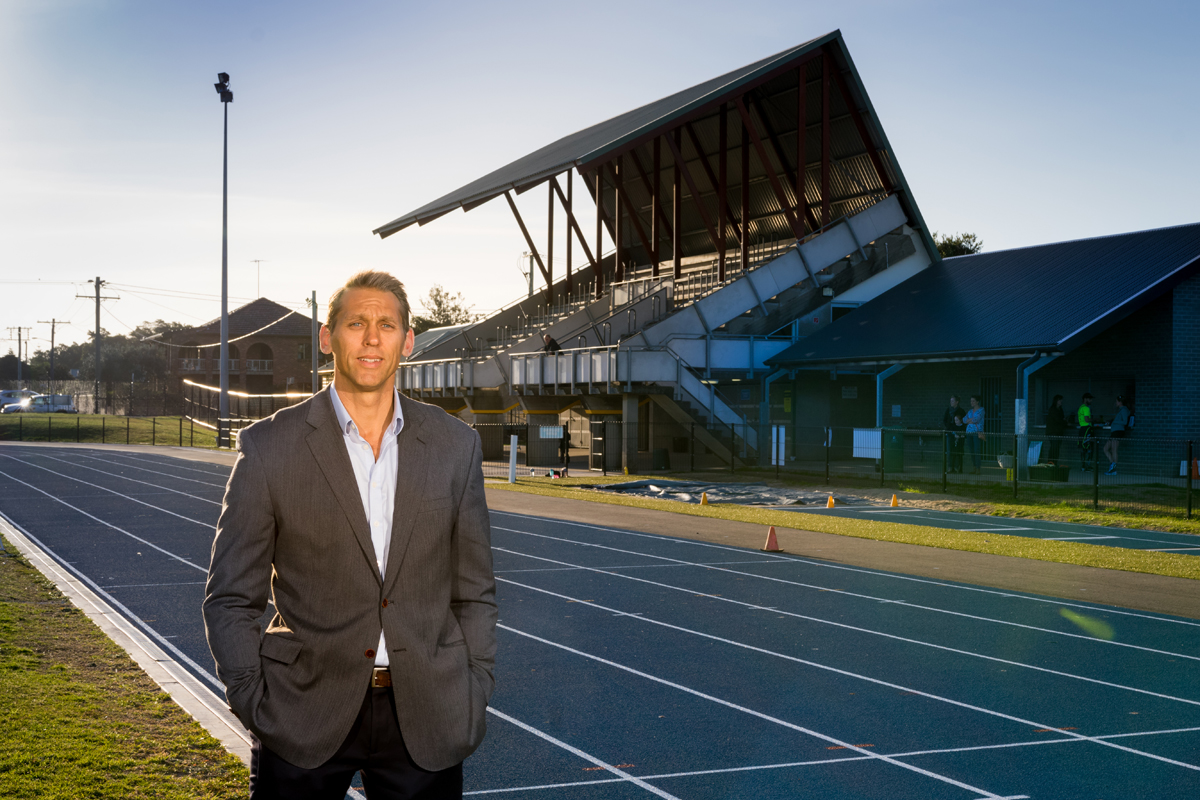Researcher Highlights
Searching for the perfect fit
Professor David Lubans
From no-frills local sporting fields of Lake Macquarie to the hallowed halls of Oxford University, Professor David Lubans’ commitment to investigating the benefits of physical activity has taken him around the world and back. Now he’s determined to improve the health and well being of young people across the globe.

An early career in Physical Education teaching sparked David’s commitment to his research passion - the design, evaluation and dissemination of successful school-based physical activity interventions.
His work is an antidote to the global pandemic of physical inactivity, the importance of which is reflected by his involvement in almost $30 million worth of research projects.
An NHMRC Senior Research Fellow, David has been a chief investigator on more than 40 school-based physical activity interventions that have benefited large numbers of children and adolescents in Australia and abroad.
Interventions are based on behavioural science theories and socio-ecological models to support behaviour change, and chances of success increased by close inter-sectoral partnerships with government and non-government organisations.
One of these interventions, the current iPLAY study, is being delivered in 135 primary schools in NSW. At a conservative estimate, this program will be delivered to more than 20,000 children.
“Ultimately, my high level goal is for all Australian schools to implement comprehensive school physical activity programs that provide opportunities for all children and adolescents to be physically active within and beyond the school day,” David explains.
Global reach
New South Wales may be the testing ground but schools around the world are already lining up to reap the benefits.
“Internationally, there is now considerable interest in supporting schools to ‘scale-up’ successful physical activity interventions.”
“The majority of young people across the globe are not provided with opportunities to be active. Moreover, young people’s experiences in physical activity are not always ideal and poor experiences can contribute to a lifetime of inactivity,” David says.
David is currently working with colleagues in Australia, Canada and Hong Kong to evaluate a number of school-based physical activity interventions. Although cultural context may be different, central to these interventions are universal SAAFE (Supportive, Active, Autonomous, Fair and Enjoyable) teaching principles based on self-determination theory.
“The SAAFE principles provide teachers with evidence-based strategies designed to optimise the positive effects of physical education and school sport. Our research team are training a generation of teachers to deliver high quality physical activity experiences for young people.”
Growing white matter
Always informing the design of school-based intervention is a separate but essentially linked area of focus - testing the effects of physical activity and fitness on young people’s cognitive and mental health.
“I’m particularly interested in understanding the neurobiological, psychosocial and behavioural mechanisms by which physical activity improves cognitive and mental health,” David explains.
“If we can demonstrate that fitter students are less stressed, better behaved in class in class and outperform their less active peers in academic tasks, schools will feel compelled to implement evidence-based physical activity programs.”
To explore the link between brain and body, David and the PRC team are undertaking innovative studies that have important implications for school policy and practice.
With David as lead investigator, the NHMRC funded Burn 2 Learn study team is using magnetic resonance imaging (MRI) to test the hypothesis that increasing adolescents’ cardiorespiratory fitness will enhance brain structure and function.
“To our knowledge, our study is the first to test this hypothesis in older adolescents using high intensity interval training (HIIT),” David says.
School-related stress is a major problem in secondary schools across the globe. In another innovative study, David is working with Dr Jordan Smith and team to examine the effect of exercise on stress reactivity in adolescents.
Positive culture
David was awarded a scholarship to play rugby union whilst obtaining a Masters degree at Oxford. It was here he recognised the importance of using rigorous research studies to provide evidence for the benefits of physical activity.
A PhD followed, with a position at the University of Newcastle soon after beckoning him home.
“When I first returned to Newcastle, I began collaborating with Professor Phil Morgan. Together we built our own programs of research that are both complementary and independent,” David reflects.
As the programs grew, so did the expertise and accolades. David is now Theme Leader for Physical Activity in Nutrition in Schools in the Priority Research Centre in Physical Activity and Nutrition. The PRC boasts a team of luminaries including Director Professor Ron Plotnikoff, Co-Directors Professors Clare Collins and Philip Morgan, as well as fellow Theme Leaders Associate Professor Ben Dascombe and Professor Manohar Garg.
David is enthusiastic about the collegiality in his department and the PRC.
“It’s a great place to work and we have a very positive culture. We have adopted a very multi-disciplinary approach- in terms of collaborating with others from outside education and I think that’s only strengthened our success.”
“My biggest goals now are seeing my mentees do well and for them to have successful, balanced careers. The students and people we’ve been able to attract to UON have done wonderful things and they really do make us look good.”
The University of Newcastle acknowledges the traditional custodians of the lands within our footprint areas: Awabakal, Darkinjung, Biripai, Worimi, Wonnarua, and Eora Nations. We also pay respect to the wisdom of our Elders past and present.
